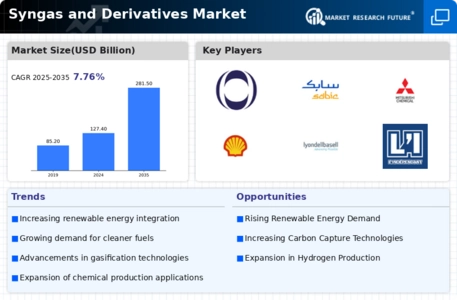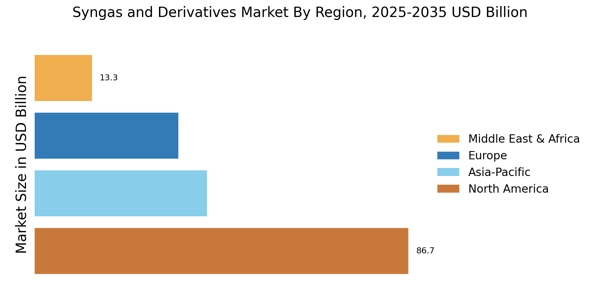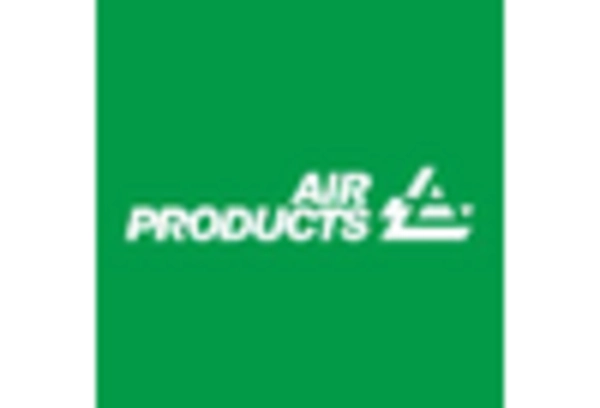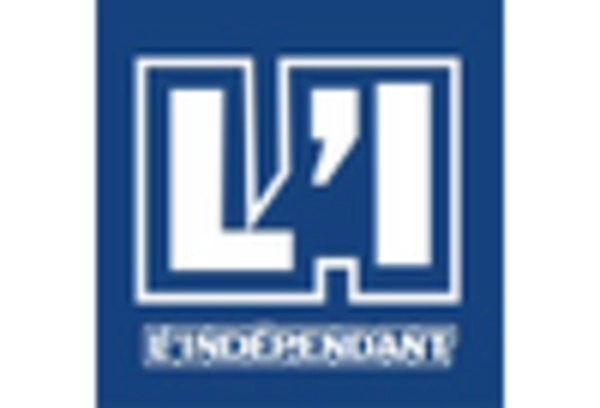Increasing Energy Demand
The Syngas and Derivatives Market is experiencing a notable surge in energy demand, driven by industrialization and urbanization. As economies expand, the need for efficient energy sources becomes paramount. Syngas, derived from various feedstocks, offers a versatile solution for energy production. In 2023, the energy consumption rate increased by approximately 2.5%, indicating a robust market for syngas as a cleaner alternative to traditional fossil fuels. This trend is likely to continue, as industries seek to reduce their carbon footprint while meeting energy needs. The Syngas and Derivatives Market is thus positioned to benefit from this growing demand, as syngas can be utilized in power generation, heating, and as a feedstock for chemical production.
Government Policies and Regulations
The Syngas and Derivatives Market is significantly influenced by government policies aimed at promoting cleaner energy solutions. Many countries have implemented regulations that encourage the use of syngas as a transitional fuel towards a low-carbon economy. For instance, incentives for carbon capture and storage technologies are becoming more prevalent, which enhances the attractiveness of syngas production. In 2023, several nations reported an increase in funding for research and development in syngas technologies, reflecting a commitment to sustainable energy practices. These policies not only support the growth of the Syngas and Derivatives Market but also align with global climate goals, potentially leading to increased investments in syngas infrastructure.
Growing Interest in Carbon Neutrality
The pursuit of carbon neutrality is becoming a central theme in the energy sector, significantly impacting the Syngas and Derivatives Market. Companies are increasingly adopting syngas as a means to achieve their sustainability goals. The versatility of syngas allows it to be utilized in various applications, including the production of hydrogen and synthetic fuels, which are essential for decarbonizing transportation and industrial processes. In 2023, a survey indicated that over 60% of energy companies are investing in syngas technologies to meet their carbon reduction targets. This growing interest in carbon neutrality is likely to propel the Syngas and Derivatives Market forward, as stakeholders seek to align with environmental standards and consumer expectations.
Rising Demand for Chemical Feedstocks
The Syngas and Derivatives Market is witnessing an increase in demand for chemical feedstocks derived from syngas. As industries seek to diversify their raw material sources, syngas presents a viable alternative for producing essential chemicals such as methanol and ammonia. The global chemical industry has shown a steady growth rate of approximately 3% annually, with syngas-derived products gaining traction due to their lower environmental impact. This trend is expected to continue, as manufacturers prioritize sustainability in their supply chains. The Syngas and Derivatives Market is thus well-positioned to capitalize on this demand, providing a pathway for the production of cleaner chemical products.
Technological Innovations in Production
Technological advancements in syngas production processes are reshaping the Syngas and Derivatives Market. Innovations such as improved gasification techniques and enhanced catalytic processes are increasing the efficiency and yield of syngas production. In recent years, the introduction of advanced reactors has led to a reduction in operational costs and energy consumption. For example, the development of integrated gasification combined cycle (IGCC) systems has shown promise in optimizing syngas utilization. As these technologies mature, they are expected to drive down costs and improve the economic viability of syngas projects. This evolution in production technology is likely to attract new players to the Syngas and Derivatives Market, fostering competition and innovation.


















Leave a Comment